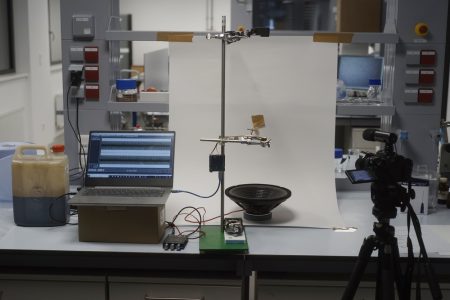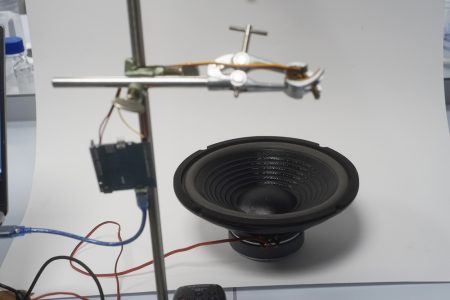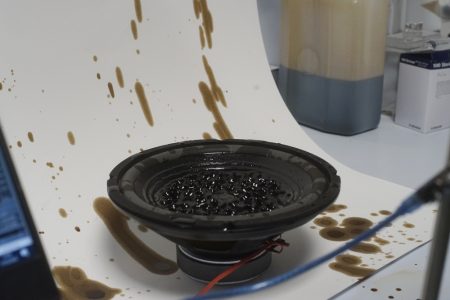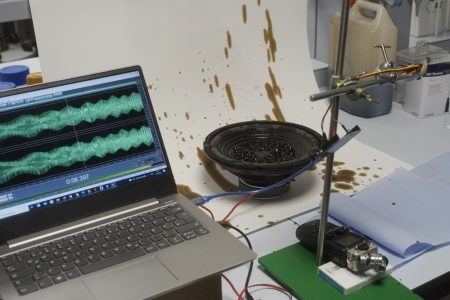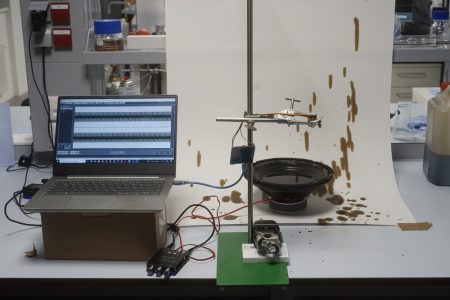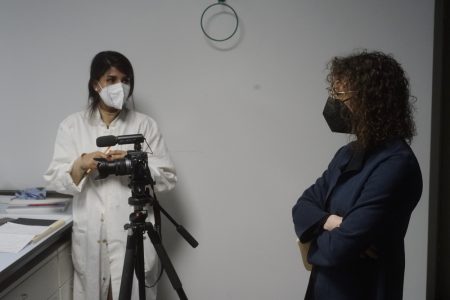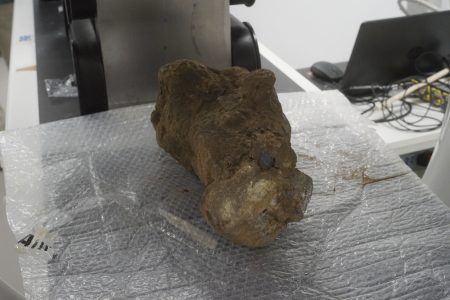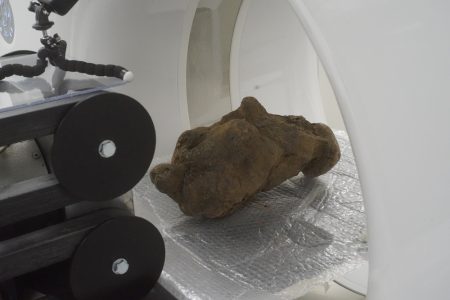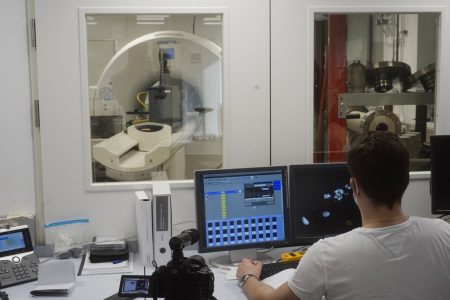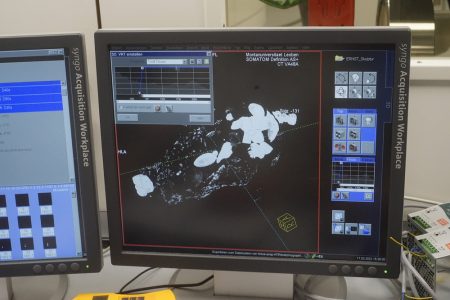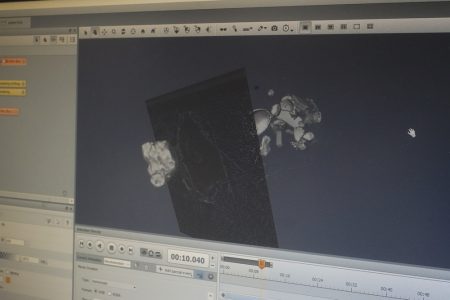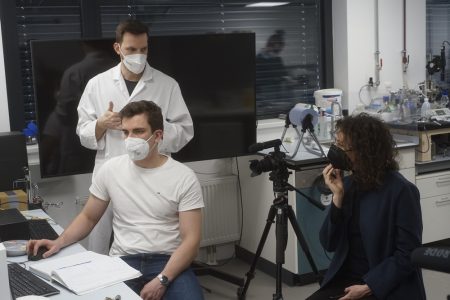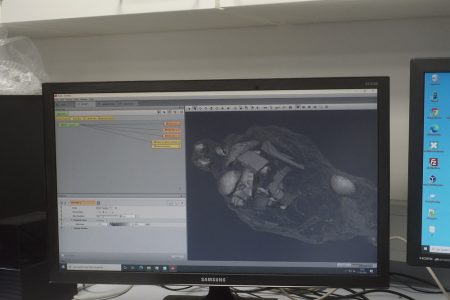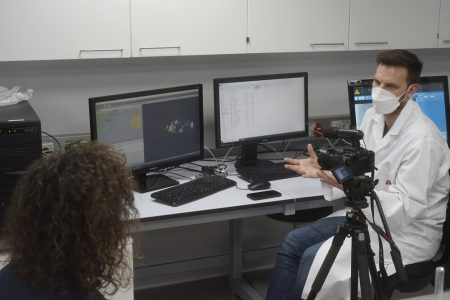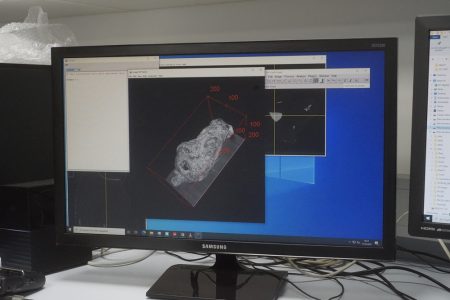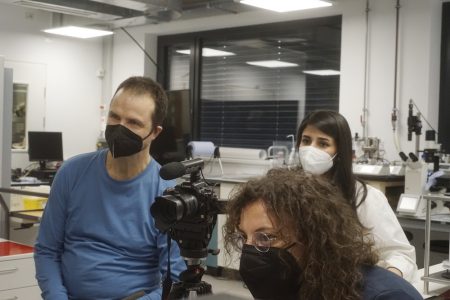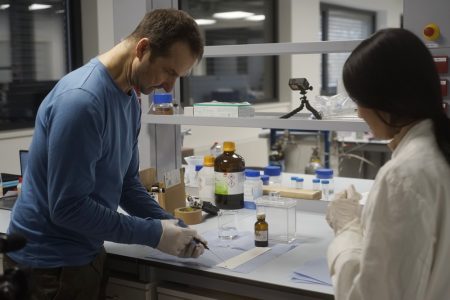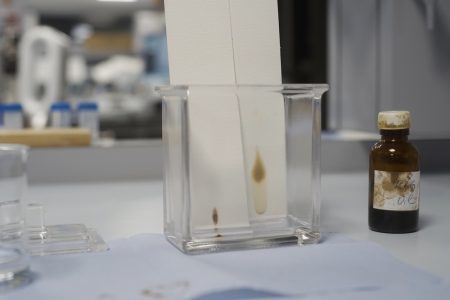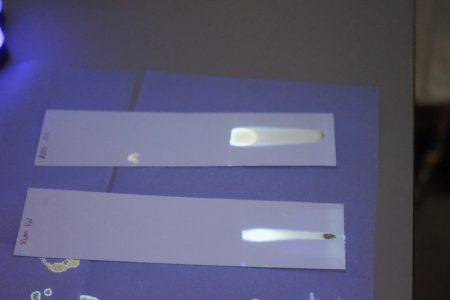Experiment X, Leoben, 17. March 2022
This series of experiments was conducted in Leoben at the Department Petroleum Engineering with the participation of Arianna Mondin, Ernst Logar, Karez Abdulhameed, Pit Arnold, and Boris Jammernegg. The experiments that were executed took crude oil as the main subject, using technologies that are used in the oil and gas industry and other creative approaches.
The first experiment, Frequency Dancing of Crude Oil, aimed to demonstrate the frequential pattern taken by fluid crude oil under acoustic frequencies. A loudspeaker was used in this experiment which acted as a swinging device for the crude oil. Several acoustic sets of different sinus frequencies were designed for the experiment, ranging from 1 to 20 Hz with and without overtone. The lower the frequency, the more harmonic the fluid pattern appeared with the least peaks. The higher the frequencies, the higher the peaks and the faster the movement. Frequencies below 10 Hz created more regular patterns which reflected as a “swarms-like movement”. The fluid seemed alive, beating like a heart and moving like “monsters of the deep”. A laser beam was pointed on the oil surface and reflected on the white background. The projected laser beam image was a kind of Lissajous figure. The experiment was inspiring for the development of a dynamic oil mirror.
The second experiment, CT scan (computed tomography) of artificial rock, involved the Department’s medical computed tomography (CT) scan of an artificial rock, which was built by Ernst Logar. The artificial rock is related to the stone metaphor for describing the properties of oil that Italian writer and filmmaker Pier Paolo Pasolini uses in his unfinished opus, Petrolio: “The infinite variety of its soft colours corresponds to an infinite variety of materials, but none of them have really been identified, because each material presents contradictory characteristics, both in relation to itself and in relation to the other minerals with which it is amalgamated or compounded.”
This non-destructive method uses a grayscale to differentiate between objects in accordance with their density differences, which enables visualization and hence evaluation of the studied object under certain circumstances that other methods fail to achieve and without damaging the objects. The artificial rock contained many objects of different densities which the CT scanner could detect. These objects – such as fossils, limestone, sandstone, plastic, and metals – were related to the petroleum industry directly and indirectly.
The third experiment, Thin-Layer Chromatography, dealt with a component-separation process for complex mixtures such as crude oil. A drop of crude oil was placed on a open-pored piece of paper and placed vertically in a container with the liquid solution (“one that has nonpolar properties”) where the drop of oil is not in physical contact with the liquid. As the solution was absorbed by the paper, it dissolved the oil and acted as a carrying medium for the crude oil, carrying the drop of oil with it in an upward direction. The heavier the crude oil components were, the slower they moved. Eventually they stopped and separated from the lighter components which were carried further away until the solution was no longer able to travel with the crude oil, but alone. To show the speed and pattern of this test, two types of crude oil were used: Kumkol oil and RAG oil.
The fourth experiment, Fluorescence Effect which represents another interesting character of crude oil. Several crude oil samples were tested in a darkroom with ultraviolet light. There were some distinctions between the samples on different paper surfaces and in different containers. The experiment results were very aesthetically interesting and there is a lot of potential to work with them in artistic ways.
Crude Oil I Acoustic frequencies I Lissajous figur I Computed tomography I Artifical rock I stone metaphore I Pier Paolo Pasolini I Petrolio I Thin-Layer Chromatography I Fluorescence effect
